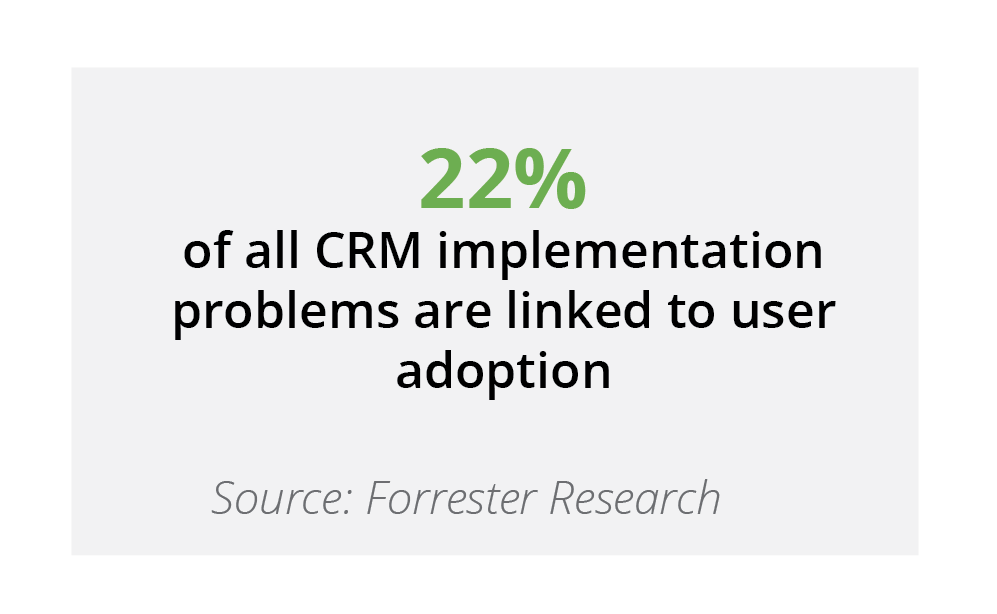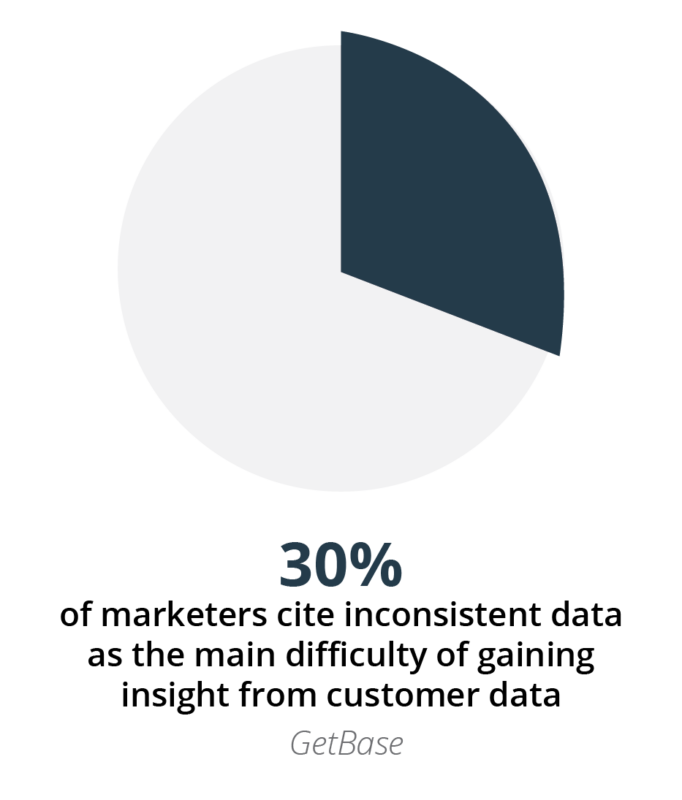You’ve made your decision; your financial institution has decided to get a CRM. You’re excited to finally be able to keep track of and manage customer relationships, keep those customers satisfied, and organize your team all in one place. But before you jump right in, you need to understand the fundamentals of a truly successful CRM project.
A CRM can be an amazing tool to organize customer profiles, set reminders, assign tasks, and manage sales opportunities and pipelines. Marketing automation has also become key to many CRMs, making communications smoother and relationships easier. But, let’s not forget that combining marketing tools with sales tools is what really sets a CRM apart from the rest. Click here to learn more about CRMs combining sales, marketing and the software needed to bring them together.
CRMs are great for businesses of any size, although smaller institutions have their reservations due to cost and implementation worries – and these are completely valid fears.
How can you know for sure that a CRM will be worth the investment? How long will it take to get it up and running? How do you know if your CRM is a good fit for the industry? We want to assure you that a CRM is an asset to teams small and large because maintaining great customer relationships is no longer a trend, but a necessity in the financial industry. People put their trust in you, and simply put, a CRM can greatly increase growth and revenue if executed well. The competition to win over customers will only increase as innovations in technology progress. Is your financial institution going to be left behind?
49% of CRM projects fail. (Forester Research) Here’s how to not let that happen:
1.Unite Your ENTIRE Team and Align Your Aspirations
We have stressed before how important it is to have EVERYONE on board, because your CRM is bound to fail if everyone from executives to the front-line do not share the common goal. Once everyone is engaged, delineate roles and understand how the system can and will work with each role.
It’s also important to understand the costs associated before moving forward. If the system is more expensive than expected or contains hidden fees, your team could face severe disappointment or give up altogether. Your CRM is bound to cost you some money, but the return should be scalable and really felt by your team. You must also understand that learning a new system takes time and no one will be an immediate expert. Plan and prepare for training and learning.
Always remember the combination of sales and marketing will result in better connectivity and improved communication. One of the main goals of a CRM is to improve productivity, efficiency, and organization for each department involved, therefore it is vital for your entire team to be on board and united.

2. Make Certain Your Data is Ready
Solve your data dilemma FIRST or face the frustration of coming back to it later. A financial services CRM requires clean data to operate properly. You do not want your new sales and marketing asset to be cluttered with unimportant – or worse – incorrect data when trying to use it to better relationships.
Click here to learn how to solve what we call the data dilemma.

3. Know Your Goals and Strategies BEFORE Getting Overwhelmed by Tech
Financial institutions are inundated with tech choices, so it’s vital to know what you plan to do and WHY. Increased pressures to be high-tech can lead to uniformed decision-making or just being purely overwhelmed and making no decision at all.
What’s your WHY? Do you want to be a more cohesive team? Does your institution want to have better communications with customers? Do you want to implement marketing automation or better marketing in general? Know these things before making the big leap.
4. Things Are Bound to Change – Be Prepared
“This is the way we have always done it” is not going to cut it anymore. If you plan on finding true CRM success, be ready for a change in operations and culture. Making the shift from Excel spreadsheet to fully equipped CRM is bound to disrupt things, but these growing pains are a good thing! It means your institution is taking the necessary steps to compete for potential customers and better serve your current customers. Is your institution ready to change?
5. Your Institution Size is Your Greatest Advantage – Use it!
Because your community institution is community sized, you have every reason to give the individual, close-knit experience to your customers – but now without the unknowns you dealt with before. You have the ability to highly personalized each touchpoint throughout their journey with your institution.
Your locality is a great competitive edge because you have an actual, personal relationship with customers. Once all your customer information is in one organized spot in your CRM, you can easily and efficiently deliver a seamless experience to them. You already know what products they have so you can better determine products they actually need. A CRM has given you the ability to sell to them based on their history and trends. Creating this helpful atmosphere lead the customer to trust your advice and judgement, thus inspiring loyalty.
The Recipe to Success: Implementing Your CRM
- Pick a use case where you know users can succeed – When you begin implementation, don’t overdo it. You won’t be able to tackle every project at once, so it’s a good idea to start small with a project you can ease into.
- Do something that creates customer benefit AND generates profit – The result of having a CRM should improve the customer’s journey, and you can create a single campaign that helps the whole thing pay for itself in the first year.
- Do not overwhelm users with an overabundance of features – It’s easy to be drawn in by a CRM’s many flashy features. Features are great but can quickly overwhelm new users if they don’t have a strong basis of understanding the system. Remember that the CRM is supposed to make everything easier, not more difficult or confusing.
- Create a pilot strategy to ensure everyone learns and adopts – Pick a few adaptive users to be the champions of the new system. If their coworkers see success, they will be more willing to adopt.
Is Your Financial Institution Ready to Compete in 2020?
Customers now expect exceptional service just as much as an exceptional product. Bringing that kind of service to them can be your financial institution’s key differentiator against the banking behemoths. Similarly, the financial industry is just going to get more and more competitive as technology budgets increase and more emphasis is placed on customer experience. Online-only banks place a huge importance on customer convenience and experience, and this can easily sway potential customers in their direction. What are you doing to create these experiences for your customers?
Your CRM can greatly benefit your financial institution, but it is important to do it right the first time. With a new year closing in, now is the time to seriously consider marketing and customer experience plans for the next year. This recipe for success will prepare you to better implement this new system in more ways than just technically. CRM software spend is projected to reach $48.4 billion in 2020. Don’t be one of those left behind.
Like this post? Don’t forget to share!



